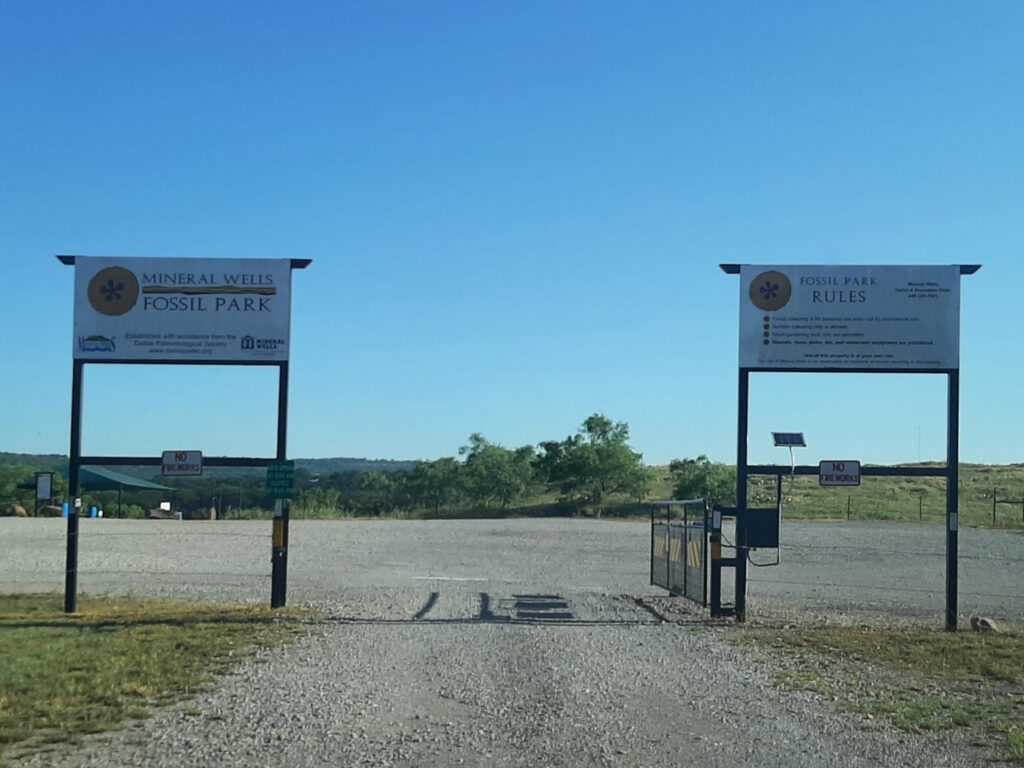
Situated to the west of the Texas town of Mineral Wells is a very unique park where you can collect fossils that lived in the bottom of a sea some 300 million years ago. We spent time here a year ago and she who never passes up an opportunity to explore rocks and fossils planned our trip so we would be visiting again this year.
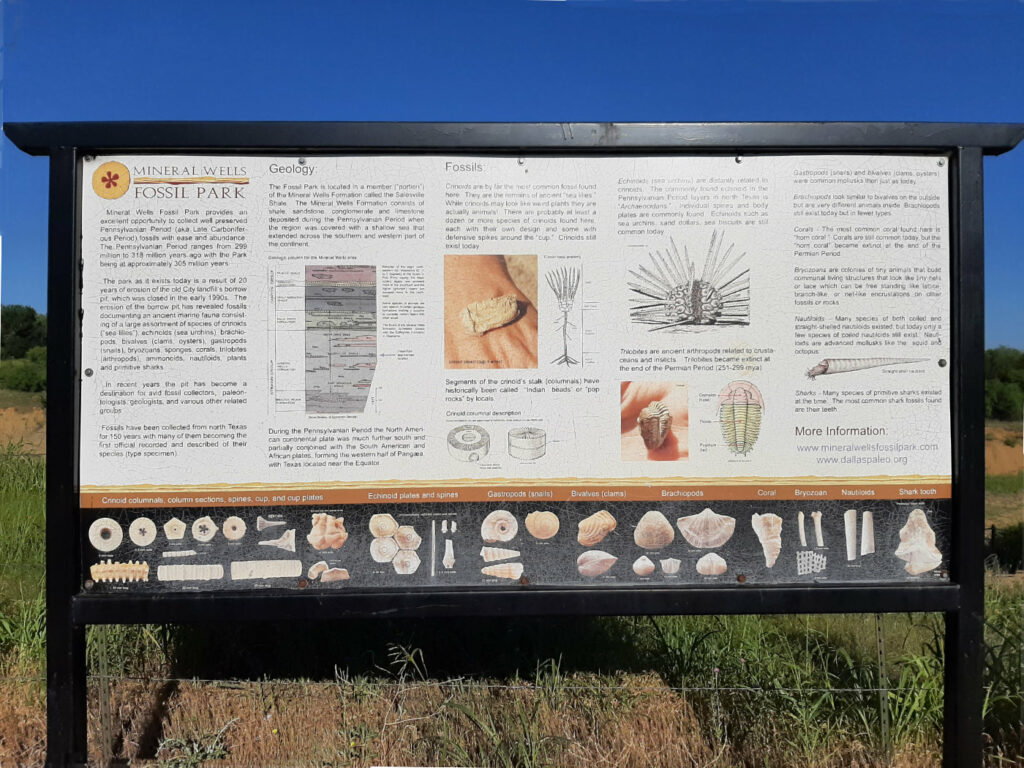
A sign tells of the different types of fossils that that can be found at the site.
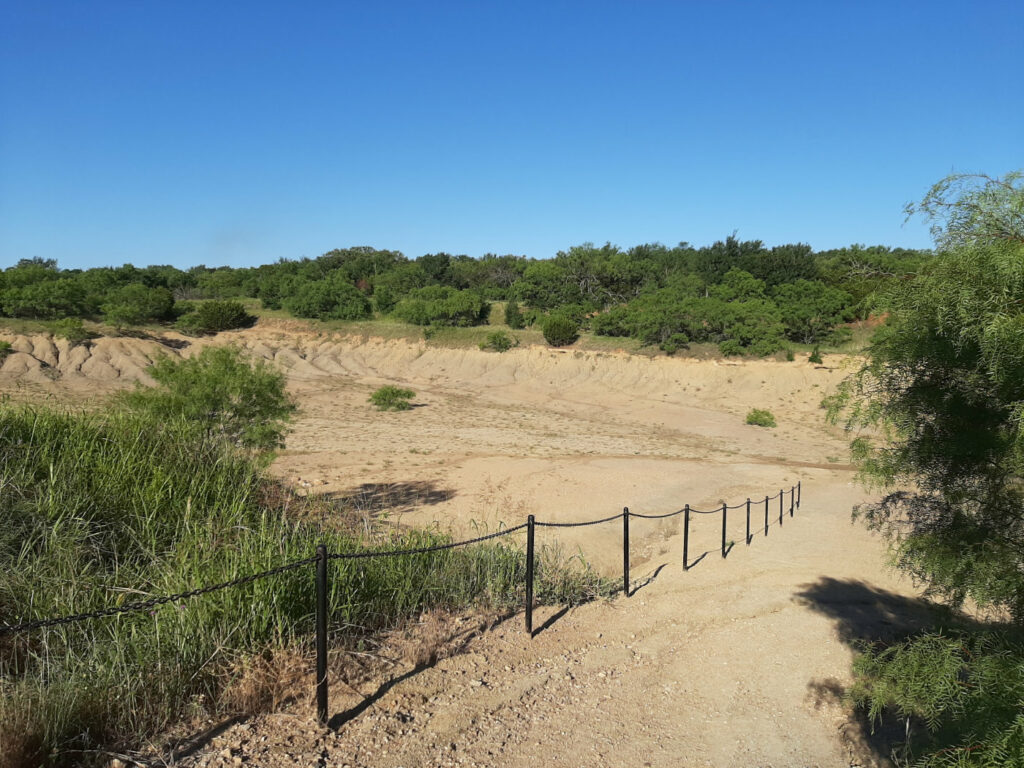
The collecting area is the former borrow pit of a now closed city landfill. It can be really hot down there so we try to arrive in the morning just after the gates open and besides a bag or two to put our finds in, we also wear camelbacks which really help to keep us hydrated.
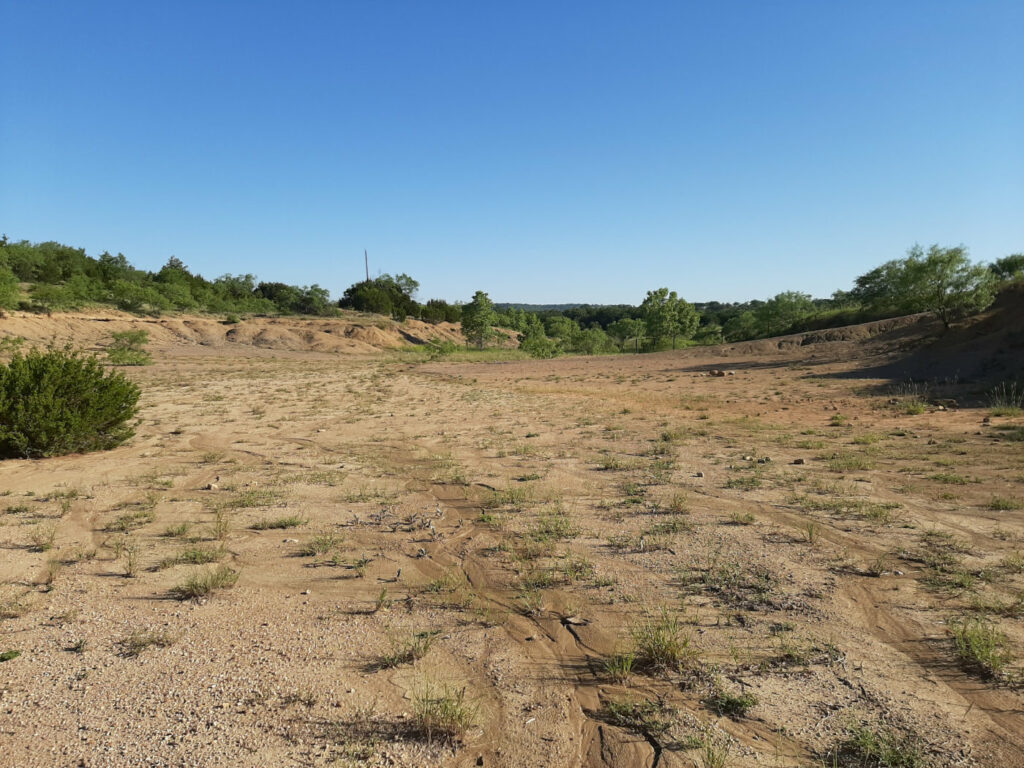
Rains erode the banks of the pit exposing and carrying the small fossils along with the runoff, meaning most anywhere you look there is likely to a fossil, though the best places to look in our experience are near the bottom of the banks.
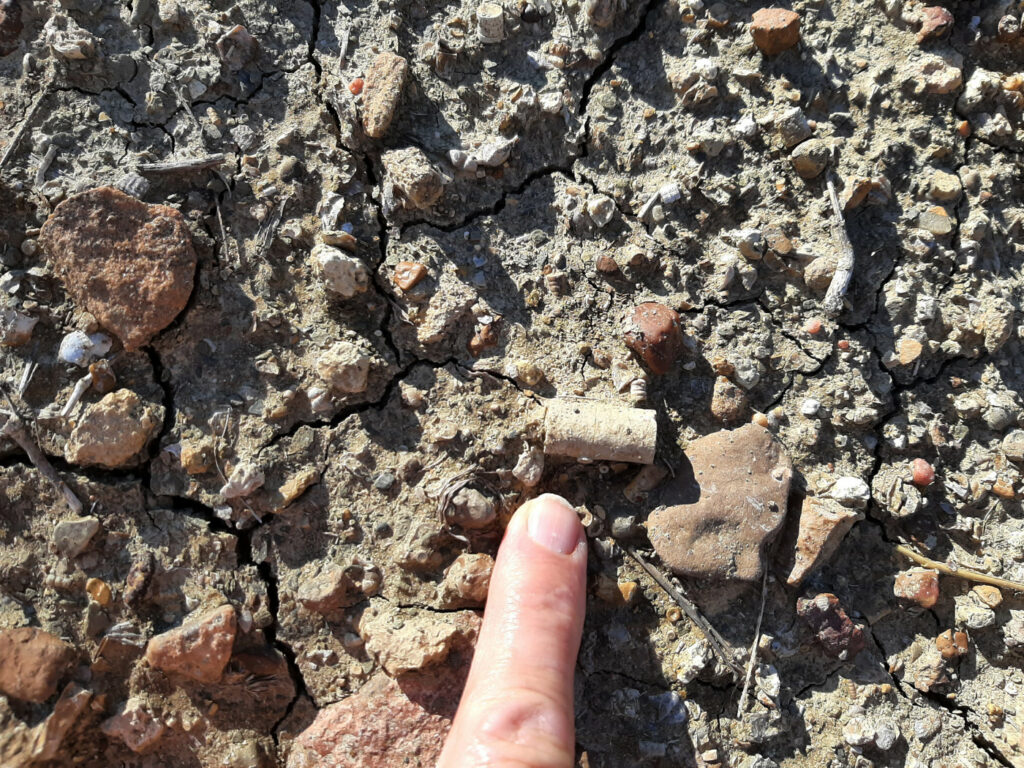
I took this photo of a section of a crinoid stem just a few feet from where the chain leading down to the bottom of the pit ended. While she and I grew up in the same state near the Great lakes, it was in opposite ends of the state. Yet we both had collected crinoid stems as kids, along with other fossils and arrowheads. No wonder we have been so compatible for so many decades. How can a guy go wrong if he marries one of the smartest and prettiest girls in her high school class. Lucky Rob.
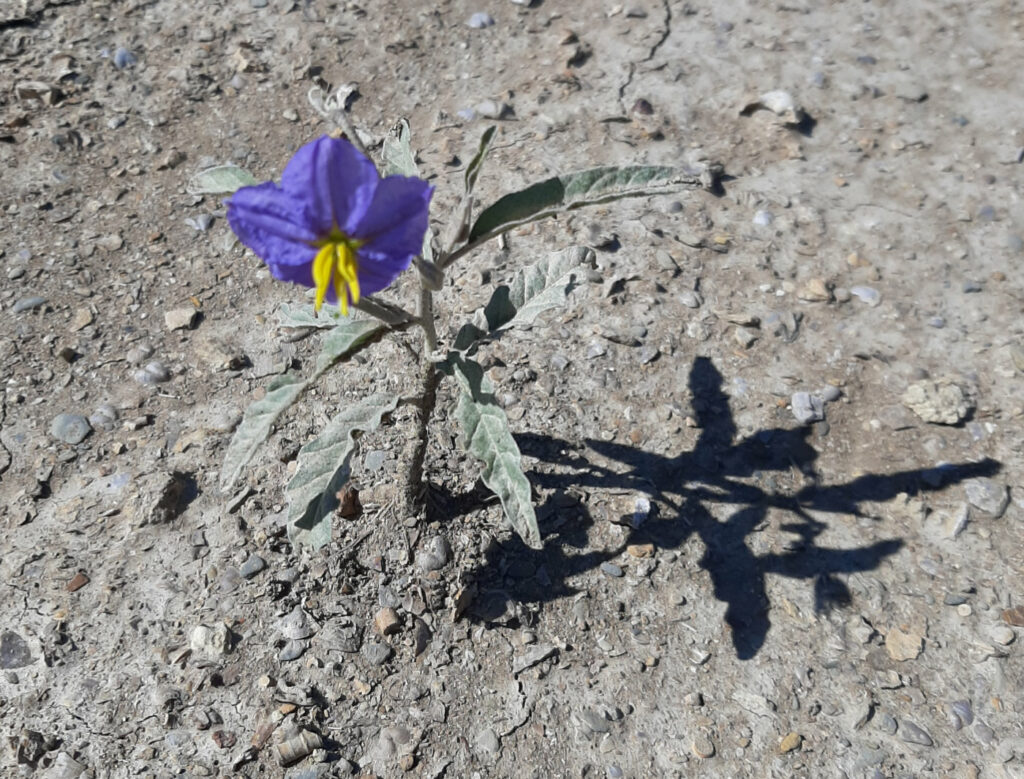
There is more than than fossils in the old borrow pit. Flower names are not my forté, so this one shall be named a low growing purple flower with a yellow center. A botanicalist I isn’t.
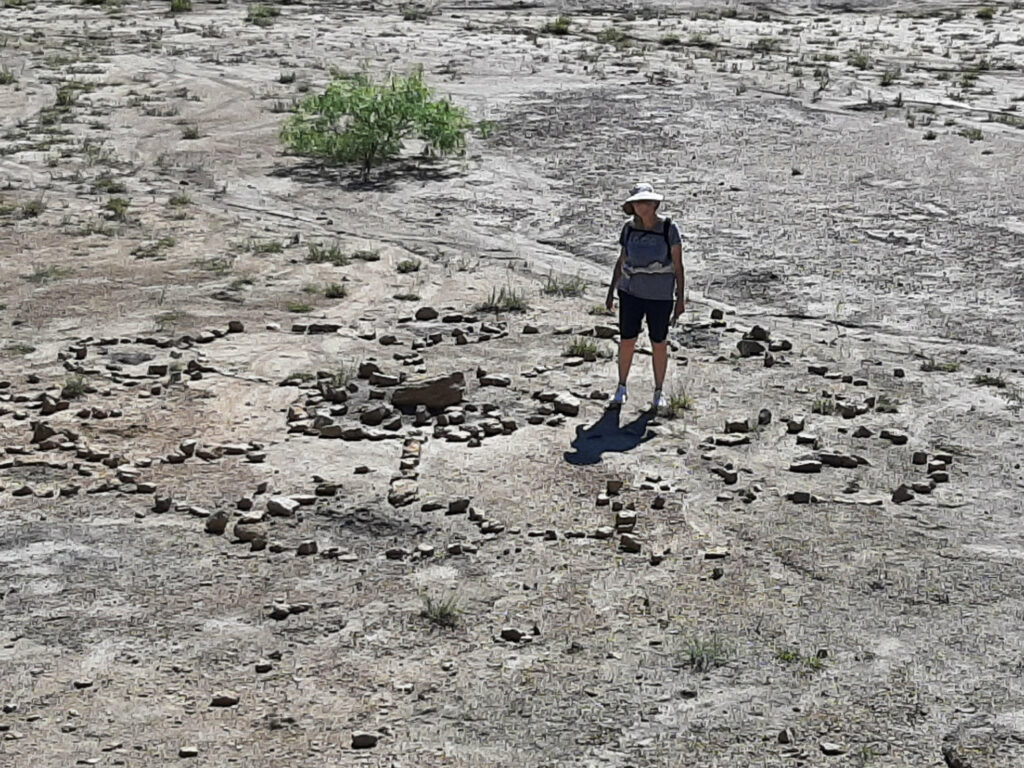
After almost two hours of constantly bending over and and scanning the ground, we decided it was time to make the long drive back to the RV park. But she who sees everything rock and fossil wise asked if I saw the rock art in the borrow pit. That meant I had to climb up the bank and take this photo. Just goes to prove that not everyone who comes here spends all their time collecting fossils. And yes, before we left she had to add some rocks a nd fossils to the rock art
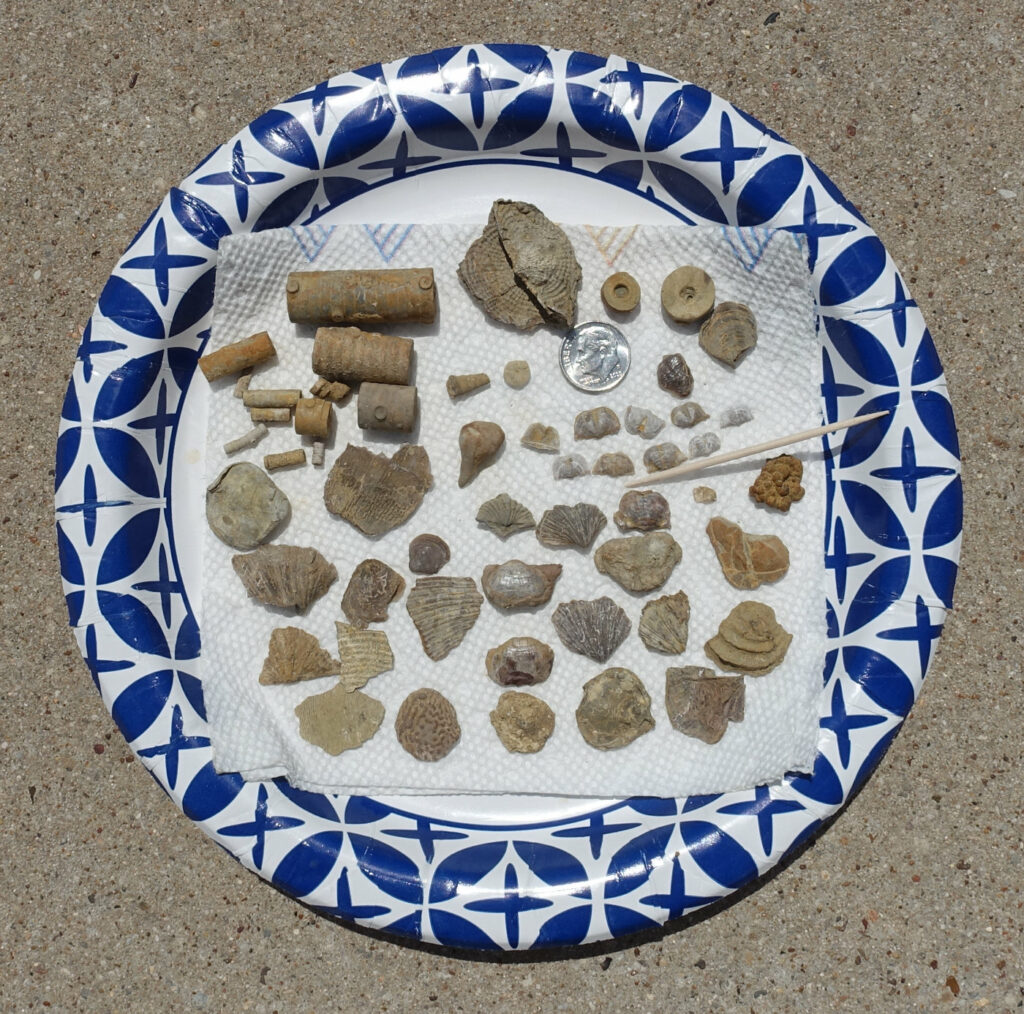
Toothpick and dime to provide scale. And before you comment, “You spent two hours here and that is all you found!” understand that we didn’t collect 1/1000 of the fossils we saw. By the way this is what I collected, but hers was similar in quantity. The relative size of the fossils are apparent from the toothpick and the dime. We had a contest as to who could find the smallest brachiopod. I figured out the smaller and lighter fossils would be carried further by the runoff, so I searched further out in the pit. The smallest ones are in the two rows between the toothpick and dime. The largest is above the dime and had a mostly complete bottom shell and half of the top shell. It is days like this that make Life so worth living.